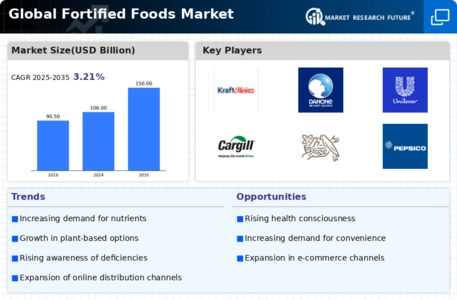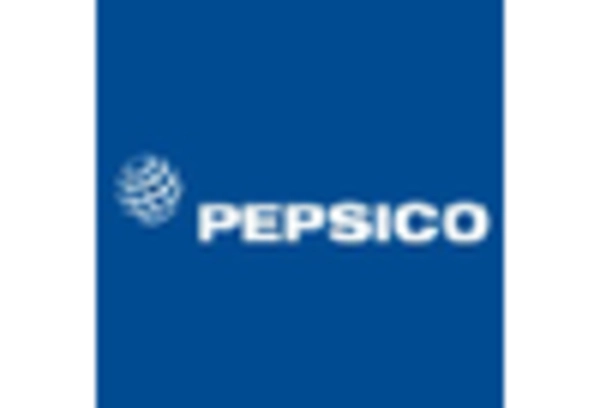Increased Urbanization
Urbanization is transforming dietary patterns and lifestyles, which in turn influences The Global Fortified Foods Industry. As populations migrate to urban areas, there is a noticeable shift towards convenience foods, which often lack essential nutrients. This urban shift has led to a heightened demand for fortified foods that can easily integrate into busy lifestyles. Data suggests that urban populations are more likely to purchase fortified products, as they seek quick and nutritious meal options. The market for fortified foods is expected to benefit from this trend, with urban consumers driving innovation and variety in product offerings. This dynamic indicates a potential for sustained growth in the fortified foods sector.
Rising Nutritional Awareness
The increasing awareness regarding nutrition and health among consumers appears to be a pivotal driver for The Global Fortified Foods Industry. As individuals become more informed about the benefits of essential vitamins and minerals, the demand for fortified foods is likely to surge. Reports indicate that the fortified foods segment is projected to grow at a compound annual growth rate of approximately 7.5% over the next five years. This trend suggests that consumers are actively seeking products that can enhance their dietary intake, particularly in regions where nutrient deficiencies are prevalent. Consequently, manufacturers are responding by innovating and expanding their product lines to cater to this growing demand, thereby reinforcing the market's expansion.
Innovations in Food Technology
Innovations in food technology are reshaping the landscape of The Global Fortified Foods Industry. Advances in food processing and preservation techniques enable manufacturers to enhance the nutritional profile of their products while maintaining taste and quality. For example, new methods of fortification allow for the incorporation of a wider range of vitamins and minerals without compromising the sensory attributes of food. This technological progress is expected to attract a broader consumer base, as taste and convenience remain paramount. Furthermore, the integration of smart packaging solutions is likely to enhance consumer engagement and education regarding fortified foods, thereby driving market growth.
Growing Demand for Functional Foods
The trend towards functional foods, which offer health benefits beyond basic nutrition, is emerging as a significant driver for The Global Fortified Foods Industry. Consumers are increasingly seeking foods that can support specific health goals, such as immunity, digestive health, and overall wellness. This shift is prompting manufacturers to develop fortified products that cater to these health-conscious consumers. Market analysis indicates that the functional food segment is anticipated to grow substantially, with fortified foods playing a crucial role in this expansion. As consumers prioritize health and wellness, the demand for fortified foods that deliver added benefits is likely to increase, further propelling market growth.
Government Initiatives and Regulations
Government initiatives aimed at combating malnutrition and promoting public health are likely to bolster The Global Fortified Foods Industry. Various countries have implemented policies that encourage the fortification of staple foods with essential nutrients. For instance, regulations mandating the fortification of flour and salt with iron and iodine have been adopted in numerous regions. These initiatives not only aim to reduce nutrient deficiencies but also create a favorable environment for fortified food manufacturers. The market is expected to expand as governments continue to support and promote fortified products, thereby enhancing public health outcomes and driving consumer acceptance.


















Leave a Comment